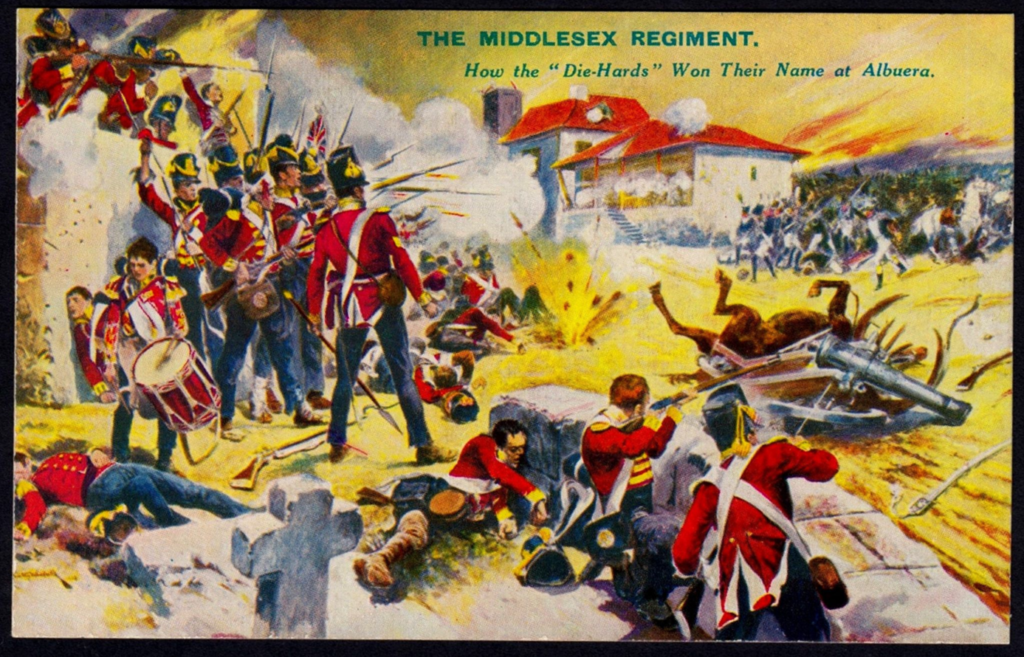By Russell Grant
This year Middlesex Day on May 16th was to be held at the Middlesex Regiment Memorial at St Mary’s Church, Sunbury-on-Thames, Middlesex. Sadly Covid has put paid to that. But let’s take this chance to find out what Middlesex Day is.
It was Prime Minister, Mrs Margaret Thatcher who, unknowingly, began the Middlesex movement. In 1987 I was invited to 10 Downing Street, by my late friend, Lord Basil Feldman, to meet the Prime Minister. In conversation with Mrs T, the lady asked where I came from and I, in all innocence, replied “Nowhere, you’ve abolished where I live”. “Where?” the PM inquired, “Middlesex” I said. As quick as cracking a whip she came back at me “Nonsense, it was only a 76-year old county council that was abolished, not a county that is 10 or 12 centuries old, ie Middlesex”. She went on to say “I represent the constituency of Finchley & Friern Barnet, which is still in Middlesex. Besides, what Parliament didn’t create it cannot abolish, and it certainly didn’t create Middlesex”. As a result, I hit upon the idea of holding a Middle-sex Day but had to find a date suitable to celebrate the county’s heritage. Trawling through my library, a book on the Middlesex Regiment poked out. There were no search engines or internet in those days, but my love of books was to hold the key to unlocking May 16th, a date when the Middlesex Regiment had one of its finest, heroic hours helping to hold back the might of Napoleon in the Peninsula War.
In the Spring of 1811, the Duke of Wellington sent Marshal Beresford, with a force of 10,000 including the 57th Middlesex Regiment to relieve Badajoz, besieged by the French, but before he could, Beresford had to contend with Marshal Soult and 23,000 Frenchmen coming up behind him from Seville. He took up a position on a long ridge overlooking the village of La Albuera (Albuhera). A German Division held the village in the centre, a Spanish Division was on the right on the ridge overlooking the valley in which Albuhera sits, with the British 2nd Division including the 1/57th (West Middlesex) Regiment of Foot; a Portuguese Division was on the left.
Soult attacked at first light on May 16th with a deception against the Germans whilst his main thrust, against the Spaniards, had the object of rolling up Beresford’s army from the allies’ right flank. The Spanish held the ridge at Albuhera against incredible odds stalling the French attack.
Given breathing space and protected by a screen of light infantry a remarkable forward passage of lines took place by the British through the Spanish, whilst in contact with the enemy. With the 1/29th on their right, The 1/57th Middlesex occupied the northern knoll on the ridge of Albuhera only a few hundred yards from the southern knoll that was occupied by French artillery. It was during this stalemate phase of the battle that the Middlesex held firm, with-standing a bombardment by grapeshot and a deadly firefight with the French for four hours: the Battalion suffered 66% casualties.
Legend states that their commanding officer, Lieutenant Colonel William Inglis, was shot through the lung, lay in front of his bullet-torn Colours exhorting his men, ‘Die hard, 57th! Die hard!’ thus giving the Regiment the famous nickname of the Diehards.
The 1/57th (Middlesex) Regiment took part in the final bayonet charge that broke the French.
Beresford’s official report stated:
‘Every individual most nobly did his duty; and it was observed that our dead, particularly The 57th (Middlesex) Regiment, were lying as they fought, in ranks, and every wound was in front.’
Fast forward to the great war and the Middlesex regiment saw several Sunbury men lost in conflict. Lance Corporal Oswald Cork died aged 33 in 1917. He lived with wife Ethel in Rooksmead Road. Private George Leonard of Nursery Road
died 1916 aged only 18 and is buried in Thiepval. They are both memorialised in the Lady Chapel at St Mary’s, Sunbury, and on the war memorial on Green Street.
To the Immortal Memory. Please come and join our Middlesex Heritage group we are non-political purely for the promotion and preservation of our dear County of Middlesex

